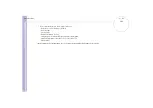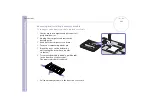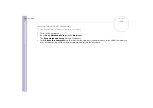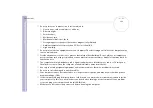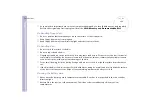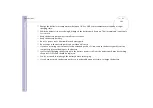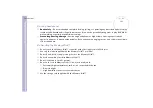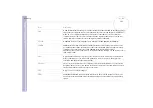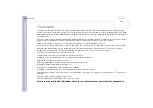
Sony
Notebook U
s
er Guide
Glossary
139
Ethernet
Ethernet is the most widely implemented local area network (LAN) technology. The Ethernet
system called 10BASE-T provides data transfer rates of 10 Mbps (megabits per second). A
more recent version of Ethernet, called 100BASE-T, provides data transfer rates of 100 Mbps.
Gigabit Ethernet supports data rates of 1 gigabit (1,000 megabits) per second.
EULA
EULA (End-User Licence Agreement) is the name given to a licence governing the software
on your computer. The EULA can be found in the
Read this first
section at the beginning
of the software guide or directly on the VAIO desktop.
i.LINK™
i.LINK™ is Sony’s version of the IEEE 1394 standard for high-speed digital serial interface.
The standard is regarded in the audio/video and IT industries as the most suitable interface
for connecting computers and digital audio/video devices (such as digital cameras etc.).
ISP
An ISP (Internet Service Provider) is a company which provides you with a user name,
password and telephone number in order to connect to the Internet.
L2 cache memory
Cache memory is RAM-like memory that enables quick access to data that has already been
read by the computer. L1 and L2 are levels of cache memory in a computer.
LAN
A LAN (Local Area Network) is a group of computers connected together within a limited
geographical area. It enables users to share devices (such as printers) and information using
one processor or server.
LCD
Short for Liquid Crystal Display. Flat notebook display technology using liquid crystals (and
light polarisation) to provide sharp, flicker-free images on a screen comprised of millions of
tiny cells. Colour can be produced by two basic techniques. Passive matrix is the less
expensive of the two technologies. The active matrix technology (or TFT) produces better
quality but is also more expensive.
LED
Short for Light-Emitting Diode. A semiconductor device that lights up when electricity passes
through it.
Term
Definition


